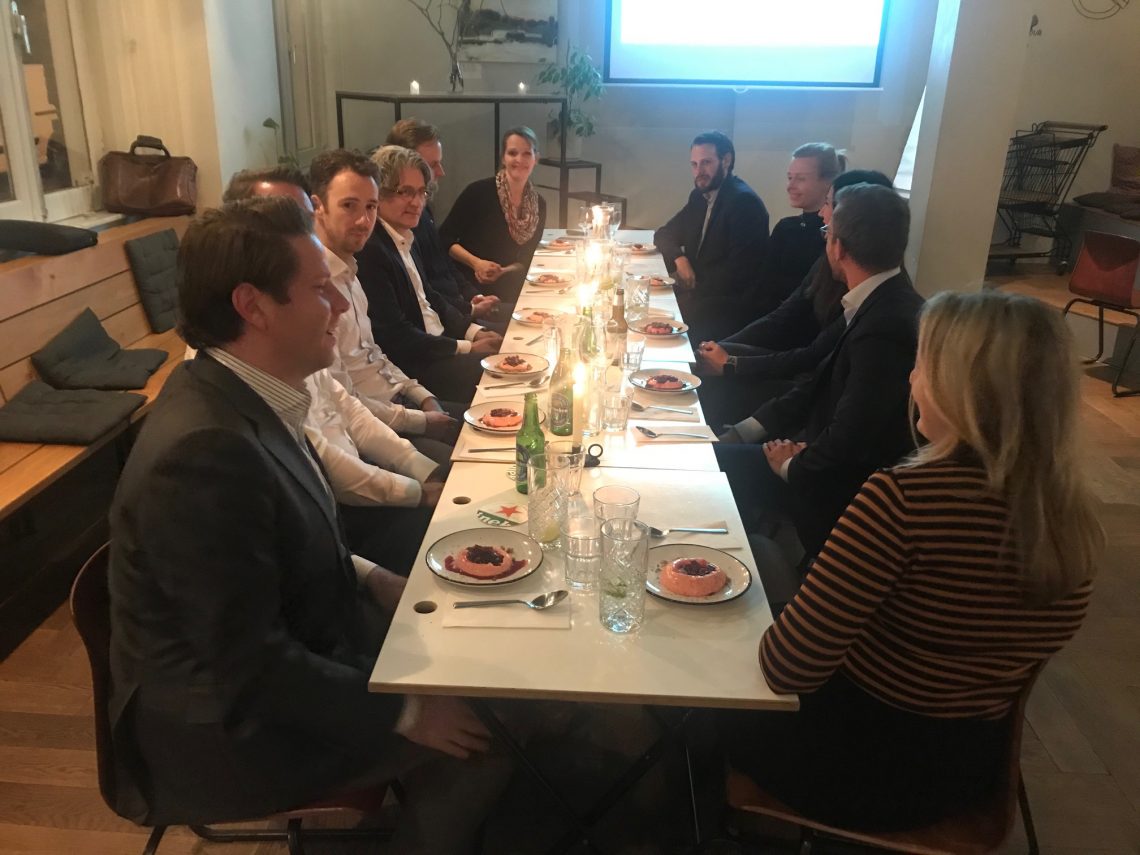HPP ‘young professionals’ about climate neutral construction
General news, HPP-Y-GEN

As the financial markets are undergoing turbulent times, the real estate sector becomes more concerned about the non-financial risks. What is the impact of the climate risk on the real estate sector? How is the sector adapting? How to create and design climate resilient cities? What are the measures required to adapt the existing business models to remain competitive? The timeliness and relevance of this topic was clearly demonstrated by the intensive debate among the participants of the HPP-Y-GEN members during the round table “Klimaatneutraal Bouwen”.
Sustainability requires a joint effort and a cultural shift from individual approach to a joint effort. Cooperation, innovation and flexibility are required. The real estate players in the construction sector should assume responsibility for the future of the sector. Interaction between client and contractor should be adapted from an “order execution” into a “solution-driven and fit for purpose” approach. Yoeri Schenau, from Arcadis, argued: “Let contractors specify the characteristics of the structure themselves, within the permissible by the client framework. This is likely to result in an extra value for a client”. Tom Claassen, bbn adviseurs, demonstrated an outstanding example of a cradle-to-cradle construction approach by showcasing a development of the municipality of Venlo building. This requires a cooperative working approach, early engagement of the suppliers in the design process and flexibility in the choice of materials.
By enabling practices that extend the lifetime of building materials through an introduction of materials passports can fundamentally reshape the business models that underpin the construction sector, enhance abilities for future recovery and reuse of products and materials. And ultimately extend lifecycle of the building.
Alexander IJkelenstam, CMS, highlighted that although much of attention is around the nitrogen pollution risk around construction phase, this risk should be carefully assessed during investment (operational) phase.
HPP-Y-GEN members concluded that the following areas require change in the construction sector:
- Design process should be more integrated, less prescriptive and solution-focused. Construction companies shall be able to step early into design process. Instead of strictly executing client-defined design and Program of Requirements (“PoR”), construction companies shall assume more of an “advisory” role and propose solutions that best fit for the purpose, adaptive, cost-efficient and more sustainable. Clients should adapt their PoR and allow for room for solutions.
- Customer-centricity. Shift focus from structures to their uses.
- Integration of technology and innovation in the production process. The Program of requirements of clients shall be adaptable. Allow for a more flexible choice of materials and structures (e.g. modular and timber construction). Construction companies should engage with new suppliers that are at the forefront of innovation. Construction companies should be focusing on long-term and assuming greater responsibility
- Contractors if want to stay competitive should not postpone their decisions to invest in technology and research. Introduce more sustainable transportation means in the construction process (e.g. electric cars). Some other construction companies are investing in technological solutions to combat nitrogen pollution and address risks of business disruption. Volker Wessels has introduced a NoNox filter which allows nitrogen emissions produced by stationary equipment during the construction phase to be reduced up to 99%.
The future of the sector requires a concerted action of all market players and a shift in paradigm.